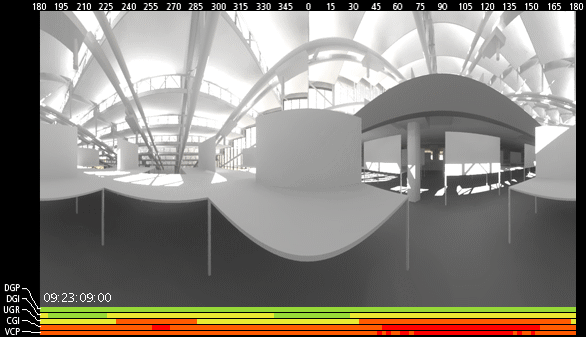Alstan Jakubiec and Christoph Reinhart (supported by the NSF)
Adaptive Comfort Paper
| Tutorial on Glare Analysis with Evalglare
Glare, physical discomfort caused by contrast or luminous intensity, is an underutilized parameter in contemporary architectural design. This project consists of a series of related activities that are concerned with experimental and computer-based design analysis techniques to asses the appearance of glare in daylit spaces.
Adaptive Visual Comfort
In this study we compared simulation results for five glare metrics under 144 clear sky conditions in three spaces in order to investigate the ability of these metrics to predict the occurrence of discomfort glare and to hence support the design of comfortable spaces. The metrics analyzed are Daylight Glare Index, CIE Glare Index, Visual Comfort Probability, Unified Glare Rating, and Daylight Glare Probability. It is found that Daylight Glare Probability yields the most plausible results. In an attempt to deal with multiple positions and view directions simultaneously, the concept of an 'adaptive zone' is introduced within which building occupants may freely adjust their position and view in order to minimize the effect of glare. The spatial and directional extents of the adaptive zone depend on furniture layout and the freedom of occupants' tasks. It is found that applying the adaptive zone concept to a sidelit office with manually operated venetian blinds reduces the predicted hours of intolerable discomfort glare from 735 to 18 occupied hours per year and increases the annual mean daylight availability from 40 to 72 percent. Adaptive Comfort Paper
